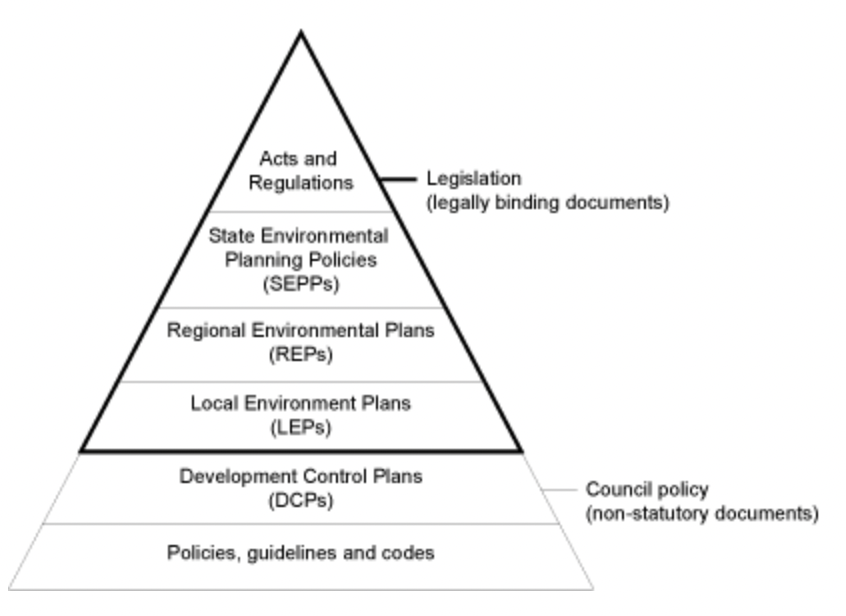Levels of development rules
Development rules have a hierarchy, starting with legislation and then stepping down to various types of plans, codes, policies and guidelines.

Acts and regulations, State rules (SEPPs) and Local Environmental Plans (LEPs) are legally binding on those who live, work in, or visit Woollahra, and on the Council.
The Building Code of Australia is referenced in legislation and adopts Standards Australia, both contain technical provisions for the design and construction of buildings and structures.
Numerous acts and regulations are used in the planning and development process, some relevant to Woollahra include:
You can access and search NSW Acts and Regulations at the NSW Government legislation website. Alternatively, you can access all NSW Acts and Regulations and Commonwealth Acts and Regulations through the Australasian Legal Information Institute.
State Environmental Planning Policies (SEPPs)
SEPPs may or may not apply to your development. A full list of all SEPPs can be found at the NSW Legislation website.
Development Control Plans (DCPs), codes, policies and guidelines are non-statutory planning documents. These may be prepared and approved by a council or the Director-General of the Department of Planning. DCPs contain detailed planning provisions and must be consistent with their associated environmental planning instruments (SEPPs and LEPs). DCPs may contain a range of measures such as planning principles, objectives and controls for buildings. DCPs can also have controls for single topics such as landscaping, drainage and car parking. A DCP may apply to a single site, a precinct or an entire local area.
Note: Those provisions in Woollahra DCP 2015 that specify requirements, standards or controls that relate to certain matters which are listed in clause 6A of SEPP No 65 Design Quality of Residential Apartment Development have no effect in the assessment and determination of a development application for development to which SEPP No 65 applies.
Residential apartment development is defined in clause 4 of SEPP No 65. It comprises residential flat buildings, shop top housing and mixed use development with a residential accommodation component. The building must be at least three or more storeys (excluding levels below existing ground level or levels that are less than 1.2m above existing ground level that provide car parking). The building must contain at least four or more dwellings.
All other provisions of Woollahra DCP 2015 can be applied to the assessment and determination of a DA for development to which SEPP No 65 applies.